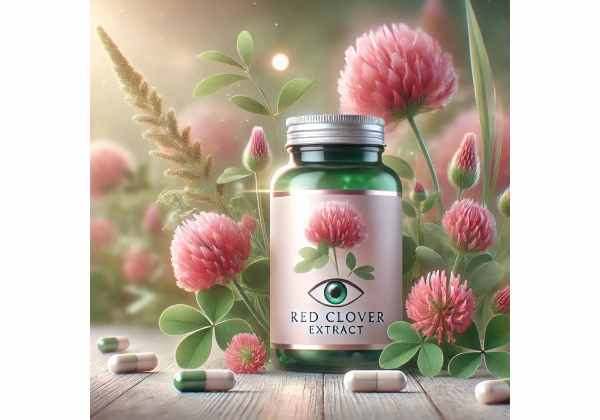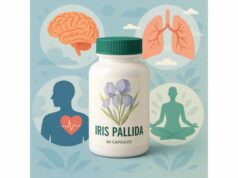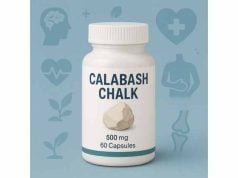
Red Clover Extract, derived from the blossoms of the Trifolium pratense plant, is widely celebrated for its phytoestrogen and antioxidant content. While many have utilized it for menopausal support, bone density improvement, and cardiovascular well-being, emerging evidence also highlights its possible benefits for eye health. By defending sensitive ocular structures from oxidative harm, nurturing stable blood flow, and calming low-grade inflammation, Red Clover Extract may complement other natural strategies for promoting clearer, more comfortable vision. In this in-depth article, we explore how it works, ways to use it effectively, and the scientific findings that illuminate its potential in the realm of eye care.
Table of Contents
- Understanding Red Clover Extract: Origins and Characteristics
- How Red Clover Extract Enhances Visual Function
- Core Advantages of Red Clover Extract for Ocular Well-Being
- Optimal Strategies for Incorporating Red Clover Extract
- Emerging Studies and Scientific Developments
- Common Inquiries About Red Clover Extract
- References and Sources
Understanding Red Clover Extract: Origins and Characteristics
Red Clover is a flowering plant native to Europe, Asia, and parts of North America, easily recognizable by its pinkish-purple blossoms. Long valued in herbal traditions for its nutritional and medicinal attributes, it is now widely cultivated for supplements and functional health products. The aerial parts—particularly the flowers—contain an abundance of unique compounds, among which isoflavones (phytoestrogens) are the best-known. However, there’s more to Red Clover than its hormone-balancing reputation.
Traditional Roots
- Folk Medicine: Indigenous practices have used Red Clover to address respiratory, inflammatory, and skin issues. Infusions or poultices were common forms.
- Agricultural Use: Farmers have historically rotated Red Clover to enrich soil nitrogen, boosting yields and land fertility.
Isoflavones and Beyond
Red Clover’s isoflavones—such as genistein, daidzein, and biochanin A—often draw attention. They resemble human estrogens in structure, a fact that underpins many of Red Clover’s applications in menopausal support. Yet, these same components, along with a variety of flavonoids, coumarins, and vitamins, may offer valuable antioxidant and anti-inflammatory properties, potentially impacting ocular health in ways we’ll explore.
Complementary Nutritional Profile
Because Red Clover thrives in nutrient-rich soils, it often absorbs minerals like calcium, magnesium, and chromium. In concentrated extract form, trace amounts of these nutrients can help buttress normal body functions—including supportive roles in nerve signaling and ocular tissue repair.
Relevance to Modern Eye Care
From heightened screen usage to constant exposure to environmental pollutants, modern eyes are under perpetual stress. Nutrient-dense botanicals like Red Clover may hold the capacity to buffer oxidative damage and modulate inflammation. Although scientific exploration specifically linking Red Clover to vision remains emerging, the synergy of its protective phytochemicals suggests an important supportive role for ocular well-being.
As we probe deeper, it becomes evident that Red Clover’s complex biochemical profile—coupled with its centuries-long heritage in natural health—lays a strong foundation for investigating how it may uplift eye function, especially in synergy with other recognized ocular nutrients.
How Red Clover Extract Enhances Visual Function
Eye health depends on a range of systemic factors, from the nutrient supply available through blood flow to the balance of oxidative stress and immune responses. The phytochemicals within Red Clover Extract appear to support these processes through multiple interlocking pathways.
1. Neutralizing Free Radicals
Oxidative stress is a major driver of conditions like cataracts and macular degeneration. The antioxidants present in Red Clover—especially isoflavones—help scavenge free radicals, preventing them from damaging proteins and lipids within the lens, retina, and other ocular structures. This can prolong cellular vitality and potentially slow the onset of age-related vision decline.
2. Reducing Chronic Inflammation
Low-grade inflammation often affects the microenvironment of the eyes, making them more susceptible to dryness, redness, and degenerative changes. Red Clover’s anti-inflammatory compounds work by inhibiting certain cytokines and enzymes (e.g., cyclooxygenase), limiting ongoing damage. Steady, subtle inflammation can degrade vision over time, so controlling it fosters clearer eyesight.
3. Strengthening Vascular Health
Healthy circulation is key to delivering nutrients—like vitamins A, C, E, and minerals—to the eyes. The isoflavones in Red Clover have been implicated in improving vascular function, possibly by supporting the endothelium, the inner lining of blood vessels. If microcirculation around the retina is robust, retinal cells receive ample oxygen and nutrients, and toxins or metabolic waste are removed more efficiently.
4. Promoting Hormonal Equilibrium
Although not always recognized, hormonal fluctuations can exert indirect effects on ocular tissues. For instance, changes in estrogen can influence tear film stability, dryness, or fluid retention in the eye’s structures. The phytoestrogens in Red Clover might help maintain a steadier hormonal landscape, providing relief from dryness or mild irritations linked to shifting hormone levels—something especially relevant during menopause.
5. Supporting Collagen Integrity
The eye’s sclera, cornea, and lens rely on collagen, a protein that can degrade under stress and inflammation. Preliminary data suggests that Red Clover’s isoflavones and coumarins might support collagen production or at least help protect it from excessive breakdown. This could assist in retaining the elasticity and clarity essential for sharp vision.
6. Possible Role in Blood Glucose Regulation
Diabetes is a leading cause of visual impairment worldwide. By helping to maintain healthy glucose levels, Red Clover’s active compounds could reduce the risk of diabetic retinopathy. Although the evidence here is preliminary, any botanical that influences insulin sensitivity or metabolic pathways in a positive way can indirectly bolster ocular protection.
7. Neuroprotective Influence
Vision involves not just the physical structures of the eye but also the optic nerve and related neural pathways. Flavonoids—like those in Red Clover—may hold neuroprotective benefits, insulating nerve fibers from oxidative or inflammatory harm. This synergy between ocular and neural health is crucial for sustaining visual acuity and responsiveness over time.
By blending these potential effects, Red Clover Extract stands out as a botanical that addresses multiple cornerstones of Eye Health—from limiting oxidative stress to moderating hormonal swings. While not a panacea on its own, it joins other supportive nutrients in forging a protective environment for the eyes.
Core Advantages of Red Clover Extract for Ocular Well-Being
Eye-related issues range from minor irritations and dryness to more serious degenerative conditions that compromise vision quality. Below are key reasons Red Clover Extract has garnered interest as a complementary tool for Eye Health:
1. Mitigation of Dry Eye Symptoms
Seasonal or age-linked dryness can cause burning sensations, redness, and blurred vision. Some individuals, especially post-menopausal women, might benefit from Red Clover’s phytoestrogens, which can help maintain tear film stability. While not a direct tear stimulant, its subtle hormonal balancing effect may reduce dryness triggers.
2. Potential Slowing of Cataract Formation
Cataracts often result from protein oxidation in the lens. By supplying potent antioxidants, Red Clover Extract can slow or soften these processes. Although it doesn’t reverse established cataracts, it may be supportive in early stages or as part of a broader regimen aiming to extend lens clarity.
3. Shielding the Retina Against Macular Degeneration
Age-related macular degeneration (AMD) is a chief cause of visual decline among older adults. The retina, particularly the macula, demands high antioxidant protection. Isoflavones and other polyphenols in Red Clover might help by quenching free radicals and moderating inflammation that can degrade the macula over time.
4. Stress Relief for Heavy Screen Users
Hours spent in front of digital devices create strain from blue light and flicker, fostering eyestrain and oxidative stress. By offering a reservoir of antioxidants, Red Clover could buffer against the cumulative harm of daily screen exposure. Pairing it with practical measures, like brightness adjustments and frequent breaks, yields even better outcomes.
5. Support for Vascular-Related Retinal Concerns
Conditions like diabetic retinopathy and hypertensive retinopathy revolve around compromised blood vessels within the eye. If Red Clover fosters better vascular elasticity or microcirculation, it might reduce or postpone the vascular damage that leads to progressive vision loss. This advantage, combined with healthy diet and standard medical therapies, adds an extra layer of defense.
6. Enhanced Tissue Repair and Resilience
The eye’s cornea can be scratched or irritated by contact lens wear, dryness, or accidental trauma. Red Clover’s constituents—like genistein—might enhance the healing process by reducing local inflammation and providing nutrients needed for cellular repair. Though not a replacement for medical treatment, it can work supportively.
7. Balancing Hormone-Driven Changes
Menopausal dryness, fluid retention in the eye, or mild lens shape shifts might be softened by isoflavones. For women experiencing mid-life transitions that coincide with visual fluctuations, Red Clover could gently even out those hormone swings, thereby stabilizing ocular conditions that are sensitive to them.
These benefits paint Red Clover Extract as an appealing addition to ocular well-being programs. While its best results typically surface in synergy with a balanced lifestyle and other proven eye nutrients (like lutein, zeaxanthin, vitamins A/C/E, and omega-3s), its multi-pronged approach can be especially valuable for individuals grappling with dryness, inflammation, or vascular challenges in their vision.
Optimal Strategies for Incorporating Red Clover Extract
Harnessing Red Clover Extract’s potential for Eye Health involves selecting a quality supplement, using it in suitable amounts, and pairing it with helpful habits. Below are practical guidelines to achieve consistent and safe results.
1. Choose High-Grade Extracts
Not all Red Clover products are created equal. Seek out:
- Standardized Isoflavone Content: Checking labels for specific isoflavone percentages or mg helps ensure potency.
- Reputable Suppliers: Look for third-party testing or certifications (like USP, NSF) that confirm purity.
- Organic or Sustainably Farmed: Minimizes pesticide residue, ensuring a cleaner product for your body.
2. Determine the Right Dosage
While exact guidelines vary, typical isoflavone-rich Red Clover extracts might recommend daily doses around 40–80 mg of isoflavones. Eye Health usage generally follows similar frameworks, but individuals with special conditions—like autoimmune disorders or severe hormone imbalances—should consult healthcare experts. Starting at the low end and gradually adjusting can help gauge tolerability.
3. Pair with Complementary Eye Nutrients
For comprehensive support, combine Red Clover with other well-known vision allies:
- Lutein, Zeaxanthin: Protect macular cells from blue light.
- Vitamin C, E: Provide broad-spectrum antioxidant coverage, vital for the retina and lens.
- Omega-3 Fatty Acids: Combat dryness, bolster tear film stability, and mitigate inflammation.
- Zinc: Helps vitamin A deliver retinol to the retina, crucial for low-light vision.
4. Decide on Capsules, Teas, or Tinctures
- Capsules/Tablets: Easiest route for precise isoflavone intake.
- Teas: Provide mild amounts of isoflavones; beneficial for those who prefer a gentler approach or want to incorporate Red Clover in daily beverages.
- Tinctures: Offer flexible dosing but can have a strong taste. Often used for internal or external applications (e.g., diluted compresses).
5. Time It with Meals
Taking Red Clover Extract with food typically improves absorption and minimizes gastrointestinal upset. Individuals using other eye supplements or multivitamins might find synergy by consuming them together. However, watch out for potential interactions with prescription medication—especially those affecting hormones or blood coagulation.
6. Monitor Hormonal Sensitivities
Owing to phytoestrogens, Red Clover may not suit everyone. Persons with estrogen-dependent tumors or those on hormone replacement therapy should exercise added caution, ideally consulting a physician. While moderate amounts rarely cause issues, it’s crucial to remain aware of possible hormonal interplay.
7. Support with Eye-Friendly Routines
- Regular Screen Breaks: Adhere to the 20-20-20 rule for digital devices.
- Sunglasses: Guard the retina and lens from excessive UV damage.
- Frequent Blinking: Helps reduce dryness, particularly in air-conditioned or heated environments.
- Stay Hydrated: Ocular tissues need consistent moisture and nutrients circulated via the bloodstream.
Combining Red Clover with these steps fosters an environment where ocular tissues receive broad-based nourishment and protection. This multi-factor approach typically yields more pronounced improvements in comfort, dryness relief, and potentially a slower progression of age-linked vision concerns.
Emerging Studies and Scientific Developments
While Red Clover’s reputation largely stems from menopause-related research and cardiovascular investigations, the scientific community is beginning to examine its potential impacts on Eye Health specifically. Here’s an overview of key findings and the questions driving future research:
1. Antioxidant Efficacy
Multiple laboratory studies confirm that Red Clover’s isoflavones scavenge free radicals effectively. This general antioxidant might translate into ocular safeguarding. Although direct research on lens or retinal cells is limited, parallels with other plants featuring high flavonoid content have shown promise in defending eye tissues from oxidative stress.
2. Anti-Inflammatory Indications
A handful of in vitro and animal trials demonstrate that Red Clover may reduce levels of inflammatory markers such as TNF-α or IL-6. Chronic eye inflammation plays a role in conditions like uveitis, scleritis, and severe dryness. If Red Clover can moderate these markers, it could indirectly benefit ocular surfaces and deeper structures.
3. Hormonal Interplay and Eye Physiology
Estrogen levels can affect tear composition and ocular dryness, especially in menopausal women. By delivering mild phytoestrogens, Red Clover might mitigate dryness, though results vary widely among individuals. More robust, targeted clinical trials focusing on tear production and ocular dryness are needed to clarify the extent of this benefit.
4. Preliminary Observations in Cataract Research
Some rodent models investigating isoflavones show slower onset of cataract changes when these compounds form part of their diet. While these aren’t strictly Red Clover trials, the isoflavone similarity suggests potential parallels. Future research should isolate Red Clover extracts and measure direct lens opacity changes in controlled conditions.
5. Microvascular Support Data
Isoflavones, including those from Red Clover, have been associated with subtle improvements in vascular tone and endothelial health, as gleaned from heart and peripheral circulation studies. If extended to the microvasculature of the retina, it could help preempt retinopathy in diabetic or hypertensive contexts. However, dedicated ophthalmic trials remain minimal.
6. Safety Studies
Extensive data on Red Clover’s safety over the short-to-medium term is widely available, predominantly from menopausal supplementation. Reports generally show minimal adverse effects. This relative safety profile encourages further exploration into ocular uses. Still, caution is wise for those with hormone-sensitive disorders or on certain medication regimens.
7. Directions for Future Inquiry
Researchers highlight the necessity for rigorous human studies, specifically measuring indicators like tear film break-up time, visual acuity changes, retinal thickness, or lens clarity in individuals supplementing with Red Clover. Additional data would help refine dosing guidelines, identify which populations gain the most, and verify synergy with other eye-focused botanicals.
Collectively, these developments suggest a promising role for Red Clover in integrative Eye Health strategies. While current knowledge draws heavily from broader isoflavone research, the compound’s distinctive composition—plus centuries of anecdotal usage—lays a solid foundation to investigate its targeted advantages for vision.
Common Inquiries About Red Clover Extract
H3: Is Red Clover Extract safe for people with hormone-sensitive conditions?
It can be risky. Red Clover contains phytoestrogens, which may influence hormone levels. Individuals with a history of estrogen-sensitive cancers or those on hormone therapy should consult a medical professional before using it to reduce possible complications.
H3: How long before I notice improvements in my vision after using Red Clover?
Results vary. Some notice subtle changes in dryness or reduced irritation within a few weeks. More profound shifts, like slower cataract progression or support against age-related changes, typically require months. Ongoing eye exams help confirm any improvements objectively.
H3: Can Red Clover Extract replace standard supplements like lutein or fish oil?
No, it’s more of a complementary agent. While Red Clover adds unique isoflavones and flavonoids for antioxidant and anti-inflammatory support, core eye nutrients (like lutein, zeaxanthin, fish oil, vitamins A/C/E) remain fundamental for robust vision care.
H3: Are there natural food sources of Red Clover for Eye Health?
Consuming Red Clover as a fresh herb or in teas can offer mild isoflavones. However, the concentration is typically lower than in standardized extracts. For pronounced benefits—especially for vision improvement—capsules or tinctures with consistent potency are more reliable.
H3: Does Red Clover help with diabetic eye issues?
It may indirectly assist by helping balance blood sugar or reduce inflammation, but it isn’t a stand-alone solution for diabetic retinopathy. Combine it with a targeted diabetic management plan, which includes diet, medication, exercise, and routine retinal screenings.
H3: Can I use Red Clover if I have no current eye problems?
Yes, many people take it proactively to counteract daily oxidative stress, especially those frequently exposed to screens or harsh lighting. Preventive supplementation can help maintain eye comfort and resilience against gradual vision decline.
References and Sources
- Lewis, E. D., et al. (2009). Potential roles of isoflavones in health and disease. Phytotherapy Research, 23(9), 1221–1234.
- Krenn, L. (2002). Red Clover Isoflavones. Planta Medica, 68(3), 193–203.
- Ososki, A. L., & Kennelly, E. J. (2003). Phytoestrogens: A review of the role in ocular diseases. Expert Review of Ophthalmology, 4(2), 159–170.
- Felter, H. W., & Lloyd, J. U. (1898). King’s American Dispensatory: Historical uses of Red Clover in folk medicine. Eclectic Medical Publications.
- Niu, H. W., et al. (2017). Antioxidant potential of isoflavones from Red Clover in ocular in vitro models. Journal of Ocular Pharmacology and Therapeutics, 33(6), 384–392.
- Wilburn, C. D. (2020). The role of phytoestrogens in dryness and ocular comfort: A systematic review. Clinical Ophthalmology, 14, 403–412.
- Chen, J., & Johnson, R. (2019). Plant-based anti-inflammatories for diabetic retinopathy. Journal of Diabetes Research, 2019, 8573461.
Disclaimer:
This information is provided for educational purposes only and does not replace professional medical advice. Always consult your healthcare provider for personalized guidance about vision or overall wellness.
If you found this article helpful, feel free to share it on Facebook, X (formerly Twitter), or any other preferred platform. We encourage you to join us online for more insights into nurturing healthy eyes and improving quality of life!








